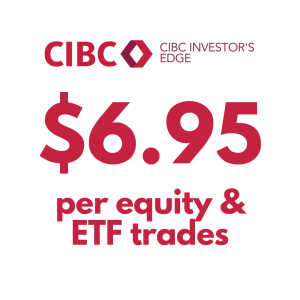
Short selling has become a hot topic in the past few decades. The hype likely started with the infamous subprime mortgage short, executed by Michael Burry and Charlie Ledley, as portrayed in the finance film, The Big Short. However, they were not the first to get rich off of short selling, nor will they be the last. On the other hand, long selling investors can get rich off short selling too through a short squeeze. A recent example of this was Gamestop. Right now, some might be interested in learning how to short a stock in Canada amidst economic instability. In fact, there has been a spike in short sells of the TD stock which might pique certain investors interest. Ready to learn more? Continue reading to understand how to short a stock in Canada.

Table of contents
What is short selling?
Short selling is the process of betting against a certain stock or investment’s performance with the objective of profit. In other words, the short seller is expecting the price to decrease. On the contrary, long selling occurs when the investor is expecting an increase in the stock or investment’s price. Here is a step by step process of what short selling looks like:
- Step 1. The investor borrows stock from a brokerage.
- Step 2. The investor sells the stock to another investor or entity.
- Step 3. The stock price declines in value. (Keep in mind the objective with short selling is for the stock to lose value, but if it increases in value, the investor loses money because they need to front the difference.)
- Step 4. The investor purchases the stock back from the market.
- Step 5. The investor returns the stock to the brokerage, and pockets the profit (or fronts the loss).
CIBC Investor’s Line Offer
Up to $6.95 per online stock or ETF trade. Plus, there’s no minimum account balance.
Most investors are long sellers, particularly those who invest on a long term basis. Not as many engage in short selling, mainly because it’s higher risk, requires in depth knowledge of financial markets, and isn’t always accessible. Finally, short selling is most commonly seen within the stock market. But with that said, any investment or asset can technically be shorted.
Related Reading: Types of Stock Orders
Pros and Cons of Short Selling
Before learning how to short a stock in Canada, it’s important to understand both the potential risks and rewards. Let’s take a closer look in the table below.
| Pros | Cons |
| Possibility of high profits in any market, regardless of economic status | Losses can be devastating and are unlimited, particularly in a short squeeze |
| Able to borrow to execute trades instead of using your own funds (you can also leverage your own investments) | Must apply and be approved for a margin account with a brokerage |
| Short sellers are able to be opportunistic by taking advantage of market events | Interest and other fees are incurred for margin account ownership |
| Immense profit is possible in the short term | Preying on the downfall of enterprises |
Can you short Canadian stocks?
Yes, Canadian stocks can be shorted. Short selling is legal in Canada so investors do not have to worry about breaking the law.
What about foreign stocks?
In other parts of the world, short selling has been temporarily banned during times of financial turmoil. For instance, Europe placed extra regulations on short selling in 2020. Canada is not among these countries, as well as the United States, but it is something to note as this may change in the future. In addition, if you plan to short foreign stock, you may need to consider the local regulations as they’ll differ from country to country.
Related Reading: Best Dividend ETFs in Canada for 2023
How much money do I need to short a stock?
Short selling is unique because you borrow stocks from a brokerage until the stock you’re shorting reduces in price or fails entirely. From there, you’ll move around the borrowed shares and receive a payout which will cover what you borrowed, plus a potential profit. In contrast, long selling usually involves putting your own cash and savings into an investment. You aren’t borrowing stocks while you wait for a profit, like with short selling. If your short sell doesn’t work out, or you experience the horrifying short squeeze, you’ll be on the hook for the borrowed stocks.
To short a stock in Canada, you need to have a margin account. These are not ordinary bank accounts that anyone can obtain. Similar to a mortgage or car loan, one must apply for a margin account and go through an approval process with the brokerage. This is to ensure the applicant has the means to repay the borrowed money (or rather, shares) to the brokerage in the event that their shorted stock investment does not work out.
CIBC Investor’s Line Offer
Up to $6.95 per online stock or ETF trade. Plus, there’s no minimum account balance.
Furthermore, margin accounts allow individuals to leverage securities they already own to purchase additional securities. This allows account holders to purchase stocks, securities and other investments with debt, or “buy on margin”. You would not be able to achieve this with a regular trading account — you need to use your own cash and savings to buy investments. This is precisely why one is required to apply for an account and prove they can repay their debt if the investment scheme collapses.
To answer the question, there is no specific amount of money you require to short sell. However, most investors who engage in short selling and possess a margin account are highly skilled at their craft. In addition, they usually have some level of wealth from their trading activities and to use as a base point for their margin account approval.
Can you short sell in TFSA?
In general, the answer is no. Short selling is an advanced form of trading which is not what a Tax-Free Savings Account (TFSA) is intended for. Rather, a TFSA is designed to help Canadians save and invest without having to worry about the consequences of tax. In addition, it is likely impossible to combine a margin account with a TFSA for the average Canadian investor.
But with that said, there are investments you can purchase on the stock market that focus on short selling. If you hold these within a TFSA, it wouldn’t be breaking any rules because it’s the same as buying any other investment in the free market.
One man named Shafik Hirani was able to maneuver the TFSA loopholes to enable short selling, thereby increasing his account balance to $275,000. With dedication and insight, you can probably achieve the same! Although, bare in mind Hirani is a professional in the financial industry.
Related Reading: How to Invest in Stocks
How do I short stock on my own?
Unfortunately, you cannot short stock entirely on your own. You must work alongside a brokerage and have access to a margin account. Often a margin account isn’t enough, you must also be approved for short selling.
If you manage to bypass these hurdles, you can choose a stock to short. If your trade is successful, the proceeds will be deposited into your margin account. But remember, if you borrow from the brokerage to execute trades, then you must repay your debt to them too, regardless of the success of your short sell.
Can you short a stock without a broker?
No, you must work alongside a broker to short sell stocks. This means having a margin account set up with a brokerage. Unfortunately, you cannot access the short sell market unless you have an account with a brokerage.
How to short a stock in Canada by Big Five Bank
The most popular financial institutions to short stock with are the big five banks. Other banks may have brokerages that allow for short selling, but it depends. If you want to learn how to short a stock in Canada with one of the big five banks, check out the step by step process below.
Can you short a stock with RBC?
- Complete an application for a margin account with your brokerage. Ensure you are set up for short selling once approved.
- Determine what stock you want to short.
- Place a short sell order.
- The proceeds will be deposited into your account once your order executes.
- Close your trade.
- Return the borrowed shares to the brokerage.
How do I short a stock in TD?
- Apply and qualify with your brokerage for a margin account.
- Select stocks you want to short.
- Place a short sell order.
- When the order executes, the proceeds will be deposited into your account.
- Close your trade.
- Return the borrowed shares to the brokerage.
Can you short sell with BMO?
- Apply for a margin account, ensure your approval allows for short selling. With BMO, you are required to have a BMO Investor Line Self-Directed account in addition to a margin account.
- Choose which stock you want to short.
- Place a short sell order.
- Once the trade executes, the proceeds will appear in your account.
- Close your trade.
- Return the borrowed shares to the brokerage.
How to short stock with CIBC?
- Open a margin account and ensure you’re approved to short sell.
- Select “Trading” from the menu.
- Select an account.
- Choose “Short Sell” from the “Action” menu.
- Enter the investment’s name.
- Enter the number of shares you want to short sell.
- Select either “Limit” or “Market” as the “Order Price” from the dropdown menu. If you select “Limit”, you will also need to enter a limit price.
- Select the account that will receive the funds from the sale.
- Click “Next” and confirm your order details.
- Submit your order.
Can you short a stock with Scotiabank?
- Open a margin account and make sure you’re approved to short sell.
- Select a stock to short sell.
- Place an order to short sell.
- When the trade executes, the funds will be deposited into your account.
- Close your trade.
- Return the borrowed shares to the brokerage.
How to short a stock in Canada with other Banks
As mentioned, other brokerages outside of the big five institutions may allow you to short sell. If you’d prefer to go with another brokerage, reach out to them directly. Inquire about margin accounts and whether or not short selling is possible with their brokerage.
Related Reading: How to Buy Stocks
Can a normal person short stocks?
What does normal mean? In this case, we’re referring to the average Canadian investor. Generally speaking, no, a “normal person” cannot short sell stocks.
Short selling is not exactly the type of thing you can just decide to do overnight. People typically get involved in short selling after a career within the finance and investing industries. In addition, the opportunity to short a stock tends to arise quickly, so most successful short sellers were already engaged in the market. They also have in depth knowledge of global markets and have access to resources that a “normal person” does not have access to.
Lastly, you need to have access to a margin account which can take time to apply and be approved for. However, it is definitely something one can work up to by dedicating themselves to learning the art of investing!
Read More: What is the Stock Market and How Does it Work? A Beginner’s Guide

